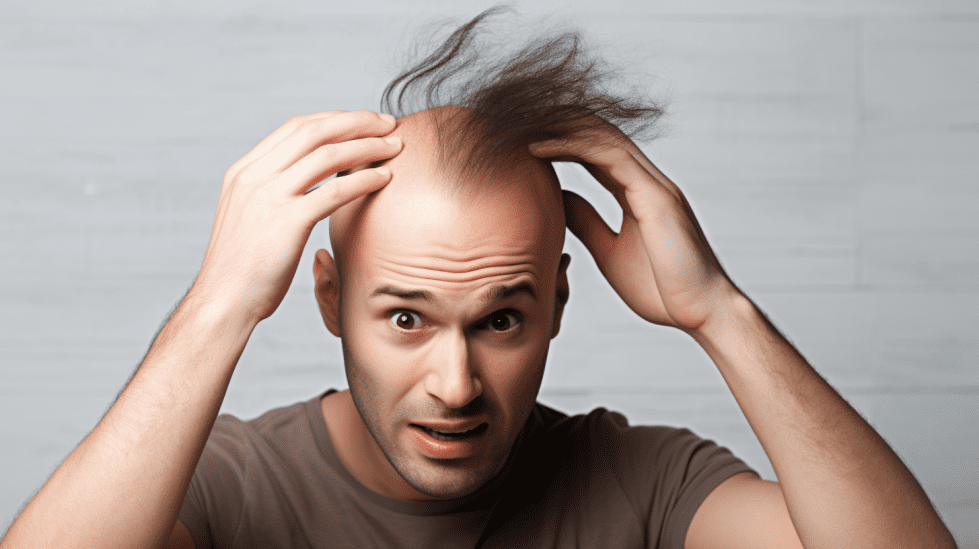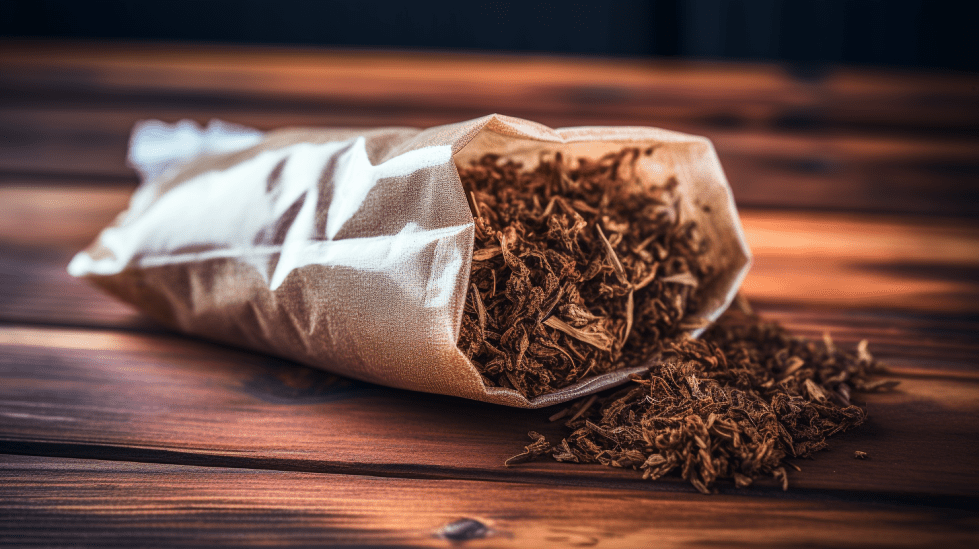Does Chewing Tobacco Cause Hair Loss
Chewing tobacco has been associated with a variety of health issues, but one lesser-known potential side effect is its link to hair loss. Though not as commonly discussed as other health risks, it is crucial to understand the effects of chewing tobacco on hair health, as this habit can have lasting repercussions on one’s appearance and confidence.
Studies have shown that there is indeed a correlation between chewing tobacco and hair loss, as well as eventual male pattern baldness. This connection can be attributed to factors such as reduced blood flow to hair follicles and the presence of harmful chemicals in the tobacco. Nicotine, a primary component in tobacco, may also lead to an acidic scalp and excessive oil secretion, which can contribute to hair shedding and damage.
By exploring the relationship between chewing tobacco and hair loss, this article aims to inform readers of the potential consequences of their habits and shed light on the importance of healthy lifestyle choices for maintaining overall hair health.
Chewing Tobacco and Its Ingredients
Chewing tobacco is a type of smokeless tobacco product that is consumed by placing a portion of the tobacco between the cheek and gum or upper lip teeth and chewing. This method of tobacco consumption allows the user to absorb nicotine through the oral tissues without inhaling smoke, unlike cigarettes.
Despite being smokeless, chewing tobacco still contains harmful ingredients that can negatively impact overall health. Some of these ingredients include:
- Nicotine: A highly addictive substance found in all forms of tobacco, including chewing tobacco.
- Nitrosamines: Carcinogenic chemicals produced during the tobacco curing process Verywell Health.
- Aldehydes: Harmful chemicals found in various forms of tobacco products that can cause health issues.
- Polynuclear aromatic hydrocarbons: Another group of carcinogens, which are also present in cigarette smoke.
- Polonium-210: A radioactive heavy metal, which can be harmful or even fatal in high doses.
These ingredients can lead to various health risks, including different types of cancer and dental issues. While there is no clear scientific evidence linking chewing tobacco directly to hair loss, the presence of nicotine may have an effect on blood circulation, potentially impacting hair growth GetGrinds and Healthline. Further research is needed to establish a clear link between chewing tobacco and hair loss.

Hair Loss: Causes and Types
Hair loss can occur for various reasons, and it is essential to understand the causes and types of hair loss to identify the link between chewing tobacco and hair thinning. There are numerous factors that contribute to hair loss, including genetics, hormonal changes, medical conditions, medications, and lifestyle choices such as the use of tobacco products.
Some common types of hair loss include:
- Androgenetic alopecia: Also known as male-pattern baldness or female-pattern baldness, it is a hereditary type of hair loss that affects both men and women. Men typically experience a receding hairline, while women generally notice thinning hair on the crown of their heads.
- Alopecia areata: An autoimmune disorder that causes the immune system to attack hair follicles, leading to hair loss in patches. This type of hair loss can affect anyone at any age.
- Traction alopecia: Caused by hairstyles and treatments that pull the hair tight, such as pigtails or cornrows, resulting in hair loss due to the tension placed on the hair follicles. This type of hair loss is often temporary but can become permanent if the hair follicle is damaged.
- Telogen effluvium: A temporary hair loss resulting from stress, hormonal changes, or medications that disrupt the hair growth cycle and cause hair follicles to enter a resting phase.
One lifestyle factor that can contribute to hair loss is the use of tobacco products like chewing tobacco. Chewing tobacco may cause hair loss by restricting oxygen in blood vessels and containing high levels of arsenic, which can damage the scalp and interfere with circulation, leading to disrupted hair follicle formation (source). It is important to consider the varying causes of hair loss when evaluating the relationship between chewing tobacco and hair thinning, as different factors may be involved in each individual’s situation.

The Connection Between Chewing Tobacco and Hair Loss
Chewing tobacco has been associated with several health risks, and one lesser-known consequence includes the potential for hair loss. This section will discuss the various ways in which chewing tobacco can contribute to hair loss by affecting blood circulation and hormonal balance.
Effect on Blood Circulation
One of the primary ingredients in chewing tobacco, nicotine, is known to cause constriction of blood vessels. This constriction can impact the delivery of essential nutrients and oxygen to the hair follicles, eventually leading to damage and potential hair loss. According to a source, the negative impact on blood circulation may result in thinning or complete destruction of hair follicles over time.
Impact on Hormones
While the direct connection between chewing tobacco and hormonal imbalance is not well-established, nicotine’s effects on the body can potentially impact hormone levels. Nicotine is known to cause stress on the body, which may lead to an increase in cortisol levels. Elevated cortisol levels can have a negative impact on hair health, potentially leading to hair loss.
In conclusion, using chewing tobacco and other forms of smokeless tobacco can potentially contribute to hair loss. The constriction of blood vessels and potential disruption of hormonal balance due to nicotine are primary factors that might lead to hair loss in individuals who use smokeless tobacco.

Scientific Studies and Evidence
Research indicates that smoking tobacco is associated with hair loss, which may lead to the question of whether chewing tobacco has similar effects. While there aren’t specific studies directly linking chewing tobacco to hair loss, it’s worth examining the known impacts of chewing tobacco on overall health, as these factors may indirectly affect hair health.
Chewing tobacco is known to cause dental and gum-related issues, such as cavities, teeth staining, gum disease, and tooth loss. These oral health problems are mainly due to the sugar and irritants present in smokeless tobacco products. The link between oral health and hair health, however, has not been extensively studied.
On the other hand, cigarette smoking has been found to contribute to hair loss through various mechanisms, such as vasoconstriction, free radical damage to hair follicles, hormonal effects, and damage to the hair follicle DNA. According to a systematic review, there is a significant association between smoking and androgenetic alopecia (AGA), a common type of hair loss.
While it is not confirmed that chewing tobacco directly affects hair health, certainly the harmful impacts of chewing tobacco on overall health cannot be ignored. Being cautious about the use of tobacco products, in general, is advisable for maintaining good health.
Alternatives to Chewing Tobacco
For those looking to quit chewing tobacco or find a healthier alternative, there are several options available. These substitutes can help individuals gradually reduce their dependence on tobacco, while still satisfying their oral fixation.
One popular alternative is nicotine-free pouches. These pouches are similar in texture to chewing tobacco but contain no tobacco or nicotine. They often include natural ingredients, such as coffee grounds or herbs, and are available in various flavors. The use of nicotine-free pouches allows individuals to taper off their tobacco consumption without experiencing withdrawal symptoms.
Another option is nicotine replacement therapy (NRT), which delivers nicotine through various forms such as gum, patches, or lozenges. NRT products help to reduce nicotine cravings and manage withdrawal symptoms, making it easier for individuals to quit tobacco use over time.
For those who prefer a more natural approach, herbal alternatives like mint leaves, cinnamon sticks, or dried fruit can provide a similar sensory experience to chewing tobacco. These natural substitutes can be chewed or held in the mouth to satisfy the urge for oral stimulation without the harmful effects of tobacco.
Lastly, behavioral techniques, such as deep breathing exercises or engaging in a physical activity, can help distract from tobacco cravings and channel the urge into a healthier habit. Seeking support from friends, family, or professional help can also be beneficial during the process of quitting chewing tobacco.

Preventing and Treating Hair Loss
Preventing and treating hair loss due to tobacco use involves a combination of lifestyle changes and self-care measures. The primary step is to quit tobacco consumption, as it contributes to hair damage and other health issues. It is essential to recognize that hair repair and regrowth measures will be unsuccessful unless tobacco use is stopped.
Along with quitting tobacco, here are a few additional steps one can take:
- Adopt a healthy diet that is rich in proteins, vitamins, and minerals which are essential for maintaining hair health. This includes foods like eggs, nuts, seeds, and green leafy vegetables.
- Seek professional treatments, such as injections containing high concentrations of components found in your own blood, to stimulate hair growth. However, this can be expensive and may require multiple treatments to be effective.
- Use products specifically designed to strengthen and protect hair, such as coconut oil. The lauric acid in coconut oil helps bind protein in hair, protecting it from breakage at the root and strand. Massaging coconut oil into the scalp may also promote better blood flow.
- Exercise regularly to improve blood circulation, which ensures a healthy supply of nutrients to hair follicles.
- Reduce stress and practice relaxation techniques, such as meditation and yoga, as stress can trigger hair loss.
By incorporating these preventive and treatment measures into your lifestyle, it is possible to minimize the negative effects of tobacco on hair health and promote hair growth. The key to effective prevention and treatment lies in remaining consistent with these practices and maintaining a tobacco-free lifestyle.
Conclusion
Chewing tobacco has been linked to hair loss, although the exact relationship between the two is not entirely clear. Some studies suggest a correlation between chewing tobacco and hair loss, as well as eventual male pattern baldness. This may be attributed to chemicals found in chewing tobacco that could have an effect on hair growth or the pH balance of the hair, as Get Grinds and CSS-PHL mention.
Furthermore, nicotine consumption through smokeless tobacco products can cause excessive oil secretion, potentially leading to hair damage and loss. The disruption of the pH balance caused by nicotine can also be a significant contributor to hair loss, according to CSS-PHL.
However, more research is needed to fully understand the extent to which chewing tobacco causes hair loss and to pinpoint the exact mechanisms involved. Those concerned about the possible impact of chewing tobacco on their hair health should consider the potential risks and consult with their healthcare provider for further guidance.
